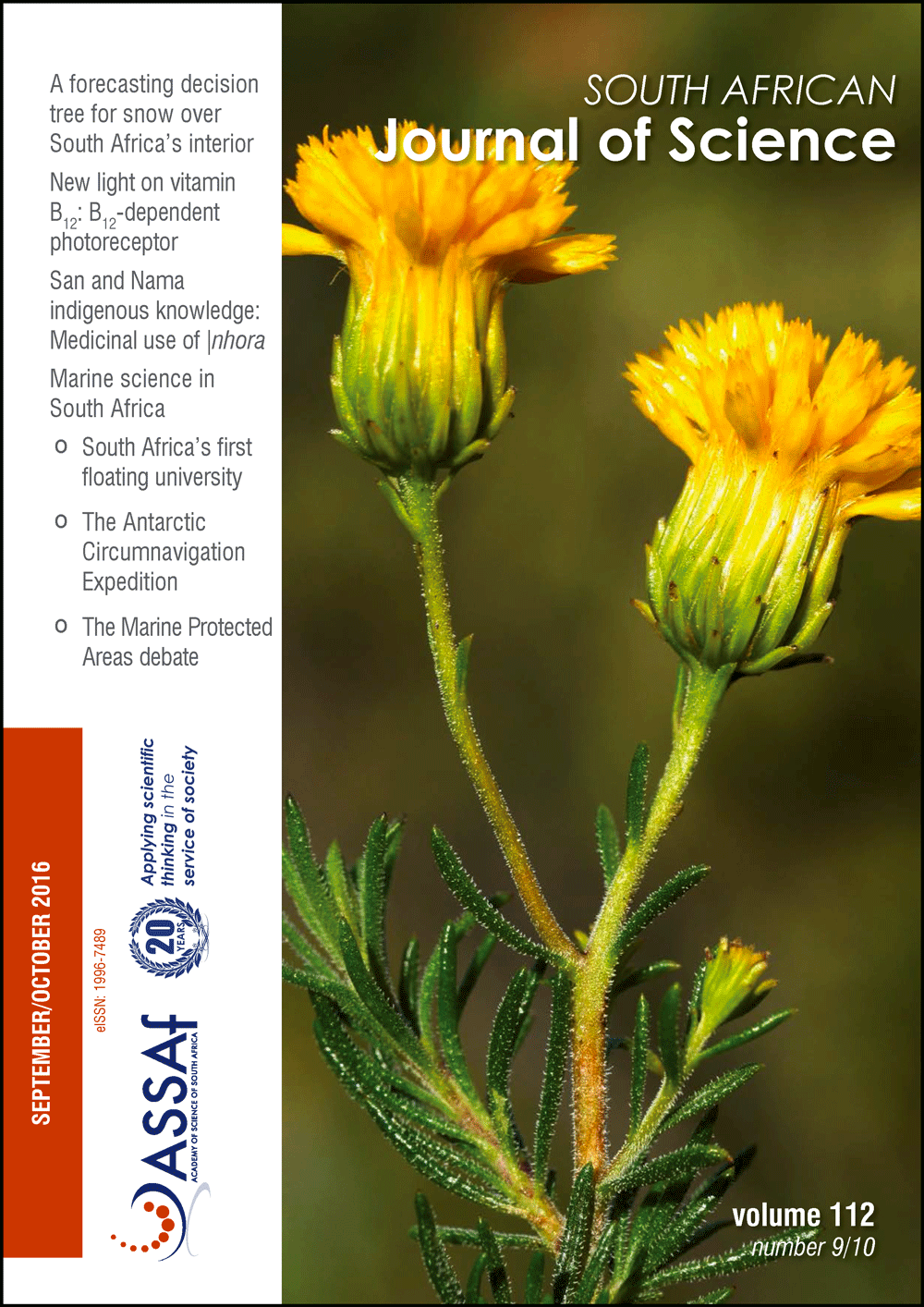Implications of summer breeding frogs from Langebaanweg, South Africa: Regional climate evolution at 5.1 mya
DOI:
https://doi.org/10.17159/sajs.2016/20160070Keywords:
palaeoclimate, Ptychadena, Summer Rainfall Zone, Early Pliocene, fossil frogsAbstract
No direct palaeoclimatic proxies have been available to indicate the seasonality or amount of rainfall on the west coast of southern Africa during the Early Pliocene. The Benguela Upwelling System (BUS) is today one of the factors responsible for the present-day aridity on the west coast of southern Africa. The initiation of the BUS is frequently linked to the entrenchment of aridity and the establishment of the current winter rainfall pattern on the west coast; however, marine proxies are inconclusive regarding the effects of past fluctuations in the BUS and sea surface temperatures on the rainfall regime. Neither the fossil evidence nor the fact that plants using the C3 photosynthetic pathway predominate at this time, provide direct evidence of winter rainfall at Langebaanweg. We challenge certain assumptions which are commonly made in the literature regarding the timing of inception of a winter rainfall regime on the west coast and the onset of aridity in the Langebaan region, and provide new evidence as to seasonality of rainfall at Langebaanweg in the Early Pliocene. Herein, the identification of frog species from the genus Ptychadena from Langebaanweg provides new and compelling evidence for a summer rainfall regime, or of at least significant summer rainfall, at 5.1 mya in the southwestern Cape of South Africa.
Significance:- Advances understanding of the evolution of the winter rainfall zone on the west coast of South Africa
- Assesses evidence for the inception of aridity and a winter rainfall regime on the west coast of South Africa
- Fossil Ptychadenidae from the Early Pliocene site of Langebaanweg provide evidence for a summer rainfall regime at 5.1 mya on the west coast of the southwestern Cape.
Published
Issue
Section
License

All articles are published under a Creative Commons Attribution 4.0 International Licence
Copyright is retained by the authors. Readers are welcome to reproduce, share and adapt the content without permission provided the source is attributed.
Disclaimer: The publisher and editors accept no responsibility for statements made by the authors
How to Cite
- Abstract 539
- PDF 547
- EPUB 213
- XML 234













.png)